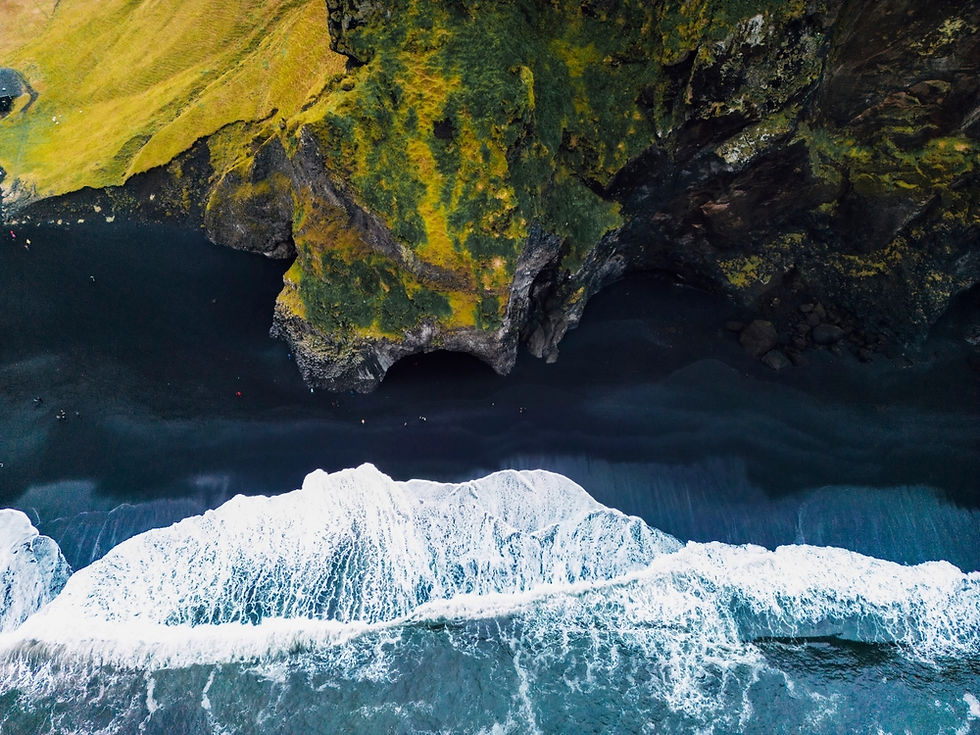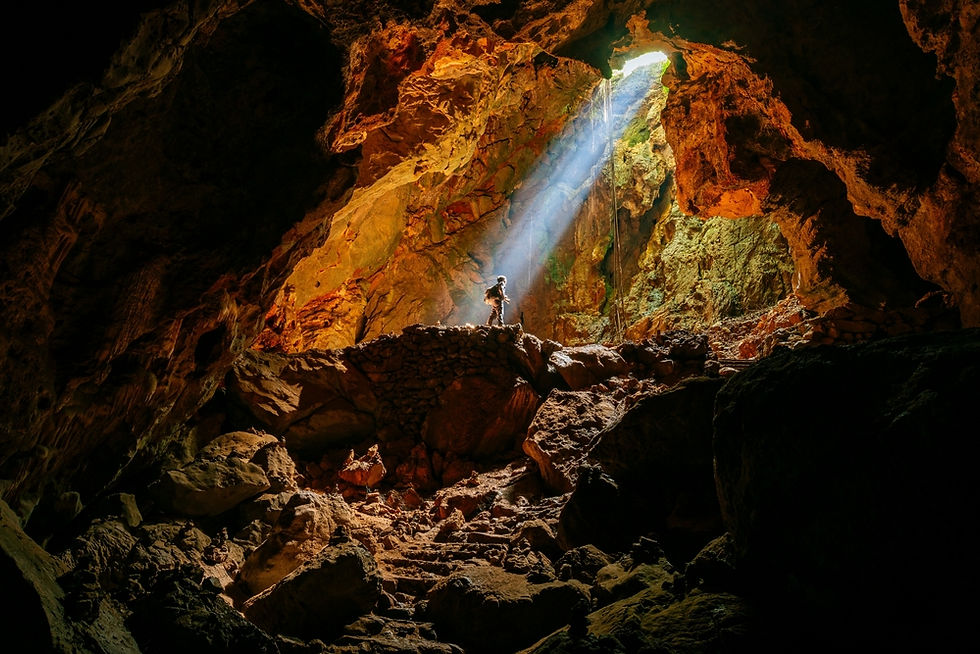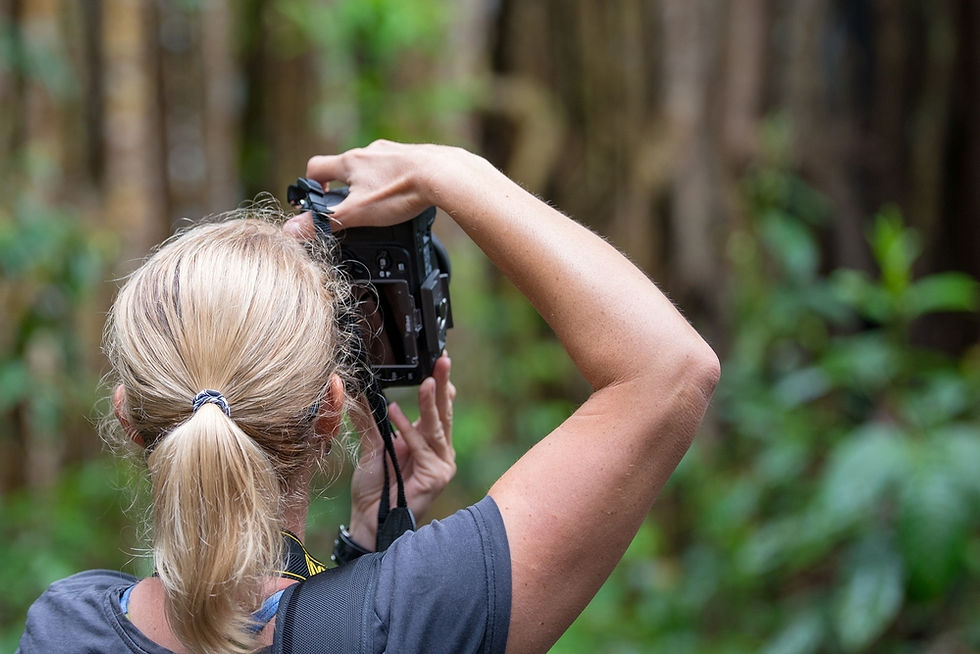Mastering Perspective: Shooting Photos From Different Angles
- Jerry Lee
- Oct 23
- 7 min read

If your photography feels stuck, the solution might not be new gear. Instead, what could get you out of your creative rut might be something much simpler (and cheaper!): shooting from a new angle.
Perspective is one of the most powerful, yet often overlooked, tools in photography. A small shift in where you position your camera can turn a flat, uninspired shot into something compelling, layered, and emotionally resonant. This is true whether you're photographing people, landscapes, or everyday objects. The perspective you choose tells a story before the viewer ever processes the details, which makes your images all the more intriguing.
Shooting photos from different angles invites your audience into the world as you see it. Instead of capturing what’s in front of you at eye level, you’re shaping how others experience the subject. From low and high angles to diagonal viewpoints and creative framing, perspective transforms the visual narrative. So, with that, let’s explore techniques that help you elevate your images, push your creative limits, and make your work stand out!
Why Perspective Matters in Photography

When you press the shutter, you’re not just recording what’s there; you’re guiding how the viewer sees it. The perspective you choose determines mood, scale, and the emotional weight of the image. A low angle can make a subject look heroic or imposing, while a high angle can shrink a scene to feel intimate or even vulnerable. Shifting perspective gives you a new way to connect your audience to your subject.
Shooting photos from various angles also adds dimension. Instead of capturing a flat representation, changing your shooting height or position introduces layers and lines that give the photo depth. This approach works especially well with architecture, landscapes, and portraits. The way a subject is framed and the angle from which it’s seen can dramatically alter how a viewer engages with the image.
Another advantage of changing perspective is that it allows you to express your unique point of view. Ten people could photograph the same scene, but those who experiment with angles will create something that feels personal and distinct. That’s the difference between taking a picture and creating a photograph. When you become intentional about perspective, your photography takes on new energy and storytelling power.
Shooting Photos From a Low Angle

One of the simplest ways to experiment with perspective is to shoot from below. Lowering your camera—whether by kneeling, crouching, or even lying flat on the ground—completely changes the relationship between the subject and the background. This is especially powerful when photographing architecture, tall trees, vehicles, or people. A low angle can make subjects look larger than life, emphasizing strength, presence, and drama.
Low-angle photography also alters how light interacts with your subject. Shadows become more pronounced, backgrounds shift from cluttered to sky-filled, and the sense of scale intensifies. Shooting photos from this angle can make a child look adventurous, a building look towering, or a landscape feel vast. It’s a perspective that pulls viewers into the scene rather than letting them observe from afar.
There are some practical considerations to keep in mind, though. Watch your foreground carefully—debris, uneven pavement, or distracting elements can creep into the frame. Using leading lines like sidewalks, fences, or pathways can help guide the eye toward the subject and add depth. A wide-angle lens works beautifully here, exaggerating the sense of scale and immersing the viewer. For portraits, placing the camera just below eye level can create a confident, empowering look without overdoing the effect.
Experimenting with low angles is a quick way to refresh your creativity. The same subject can look entirely different from this vantage point, and practicing this technique helps you develop a more instinctive feel for how angles shape emotion and narrative.
Shooting Photos From a High Angle

Just as shooting low creates power and drama, shooting high offers an entirely different emotional tone. Capturing a scene from above can give the viewer a bird’s-eye view, opening up the frame and adding context to the subject’s surroundings. This angle often creates a sense of scale, distance, or quiet observation. It works beautifully for flat lays, travel scenes, cityscapes, and environmental portraits.
One of the strengths of shooting from above is its ability to simplify a composition. Eye-level shots often have competing background elements. When you elevate your position, the background shifts—sometimes to something clean and minimal, like the ground or a patterned surface, helping your subject stand out. For portraits, high angles can create a softer, more intimate look. For landscapes, it can emphasize patterns, textures, and geometry.
When shooting photos from a high angle, be mindful of clutter. Elevated shots can reveal more of a scene, which is both a blessing and a challenge. Simplifying your composition with deliberate framing helps keep the image strong. You can achieve this perspective by standing on a staircase, balcony, or even using a drone for aerial shots. Ladders or step stools can work for everyday practice.
The key with high-angle photography is intention. It’s not just about pointing the camera down; it’s about considering how that downward angle tells the story differently. It can make the subject appear delicate, add structure to a landscape, or reveal patterns invisible at ground level.
Side Angles and Diagonal Perspectives

While low and high angles dramatically shift how we view a subject, side and diagonal perspectives create a more subtle but equally impactful change. Simply moving to the left or right of your subject alters the composition and depth. Side angles introduce layering—foreground, subject, and background all interact differently, giving a more dynamic sense of space.
Diagonal perspectives go a step further by adding movement and energy. Shooting photos at a diagonal creates visual tension that draws the eye deeper into the frame. It works exceptionally well in architectural photography, where straight lines and structure play a major role, but it can also elevate portraits, street photography, and still life images.
The secret to mastering side and diagonal angles lies in subject placement. Moving off-center requires careful attention to balance. A well-composed diagonal shot will guide the viewer through the image without feeling chaotic. This is also an excellent way to practice the rule of odds and framing techniques, since diagonal lines can naturally frame your subject.
These perspectives are also excellent for telling layered stories. For example, shooting down an alley from the side rather than straight on adds both mood and narrative. The subject feels more embedded in their environment, and your image gains subtle complexity that makes it more interesting to look at.
Creating a Strong Focal Point Through Perspective

Unique perspectives don’t just change the overall look of a photo; they can also direct the viewer’s eye exactly where you want it. A well-chosen angle acts like a guide, leading attention to your focal point naturally. Foreground elements, framing techniques, and negative space are powerful tools in this process.
For example, shooting photos through a window frame or archway instantly creates a visual anchor. Leading lines like paths, fences, or beams direct the eye toward the subject. Negative space emphasizes isolation and can make a single subject feel even more prominent. When combined with creative angles, these techniques give your images clarity and purpose.
Perspective also affects how light falls on your focal point. By moving your position slightly, you can shift highlights and shadows to emphasize the subject more effectively. This is particularly useful in portrait and product photography, where subtle lighting changes make a big difference.
Developing this level of awareness takes practice, but once you start seeing compositions in terms of focal direction, your shooting becomes more intentional. Your images won’t just look better—they’ll feel more immersive!
Elevating Your Images Beyond the Camera: Printing and Presentation

Perspective isn’t just something you capture; it’s something you share. The way you present your work can elevate the perspective you’ve created in-camera, giving it physical presence and depth. While digital displays are convenient, printing your work adds a tactile, gallery-quality dimension that can’t be replicated on a screen.
Printing your best work after shooting photos from unique angles can help you see your compositions more critically. When displayed in print, subtle details stand out, and the way perspective draws the viewer’s eye becomes even more apparent. This is where presentation choices—like paper type, framing, and matting—truly matter.
This is where we come in. We can help you bring your work to life. Our Fine Art Paper Prints are particularly well-suited to perspective-rich photography. Its smooth surface gives images a timeless, gallery-worthy finish. When paired with a carefully chosen frame and matting, the perspective you captured behind the lens is amplified on the wall.
Glossy, Luster, and Metallic paper options are also available, but Fine Art Paper truly shines when you want to emphasize light, texture, and emotion. Just as your angle guides how viewers see your subject, your print choices guide how they experience it. Considerations like this—how you present your image— is the final layer of storytelling.
Practical Exercises to Experiment With Perspective

The best way to master perspective is through hands-on practice. Start with something simple: choose one subject—a tree, a building, or even a friend—and photograph it from at least five different angles. Include a low angle, a high angle, a side perspective, a diagonal angle, and one from far away. Look at how each shot conveys something different, even though the subject hasn’t changed.
To take the exercise further, print your favorite angle. Seeing it on paper reveals details you might overlook on a screen. It also shows how perspective affects the way viewers engage with your work. Try mounting your print with different matting or frames to explore how presentation enhances or shifts the feeling of the image, too.
This kind of exercise trains your eye to see more possibilities. It encourages you to slow down, move around, and think deliberately about how each choice shapes the final photograph. With practice like this, you’ll find that your ability to compose an effective shot is greatly improved—along with the results you get!




Comments